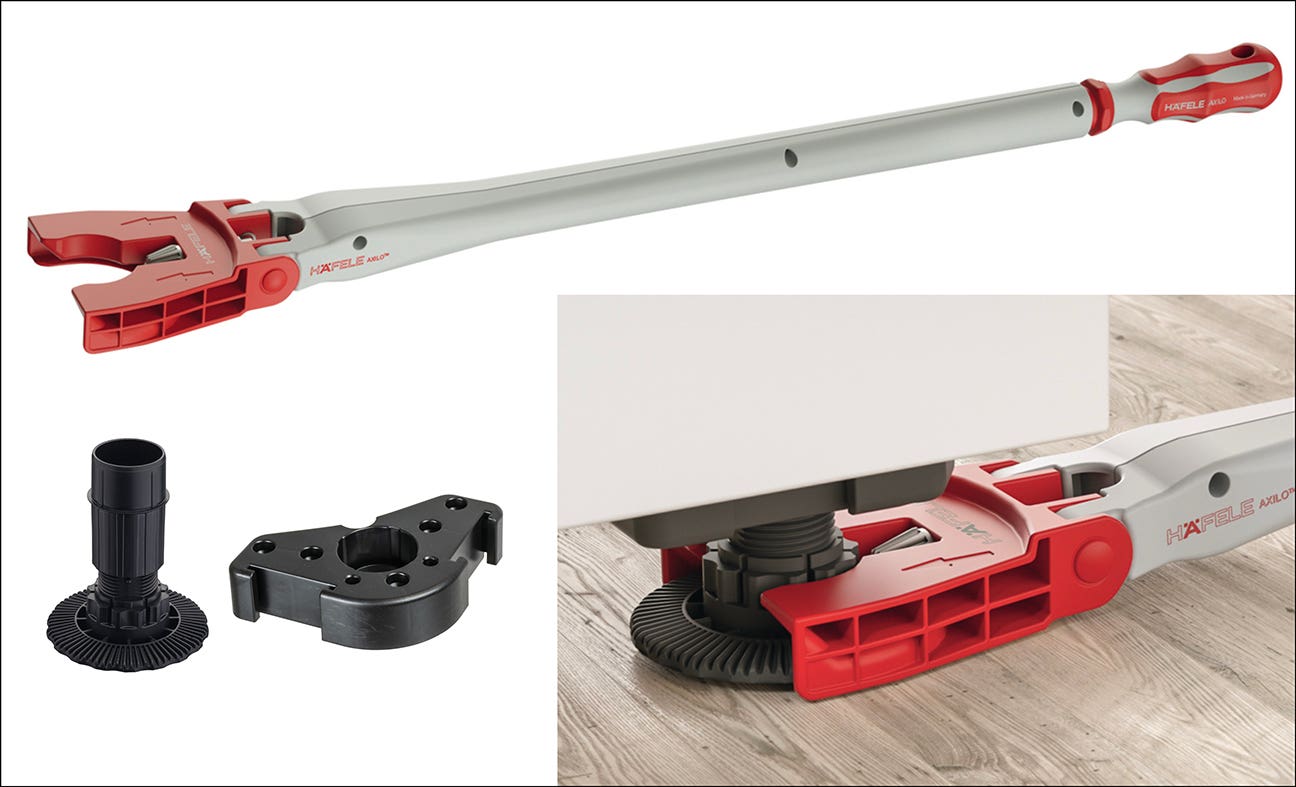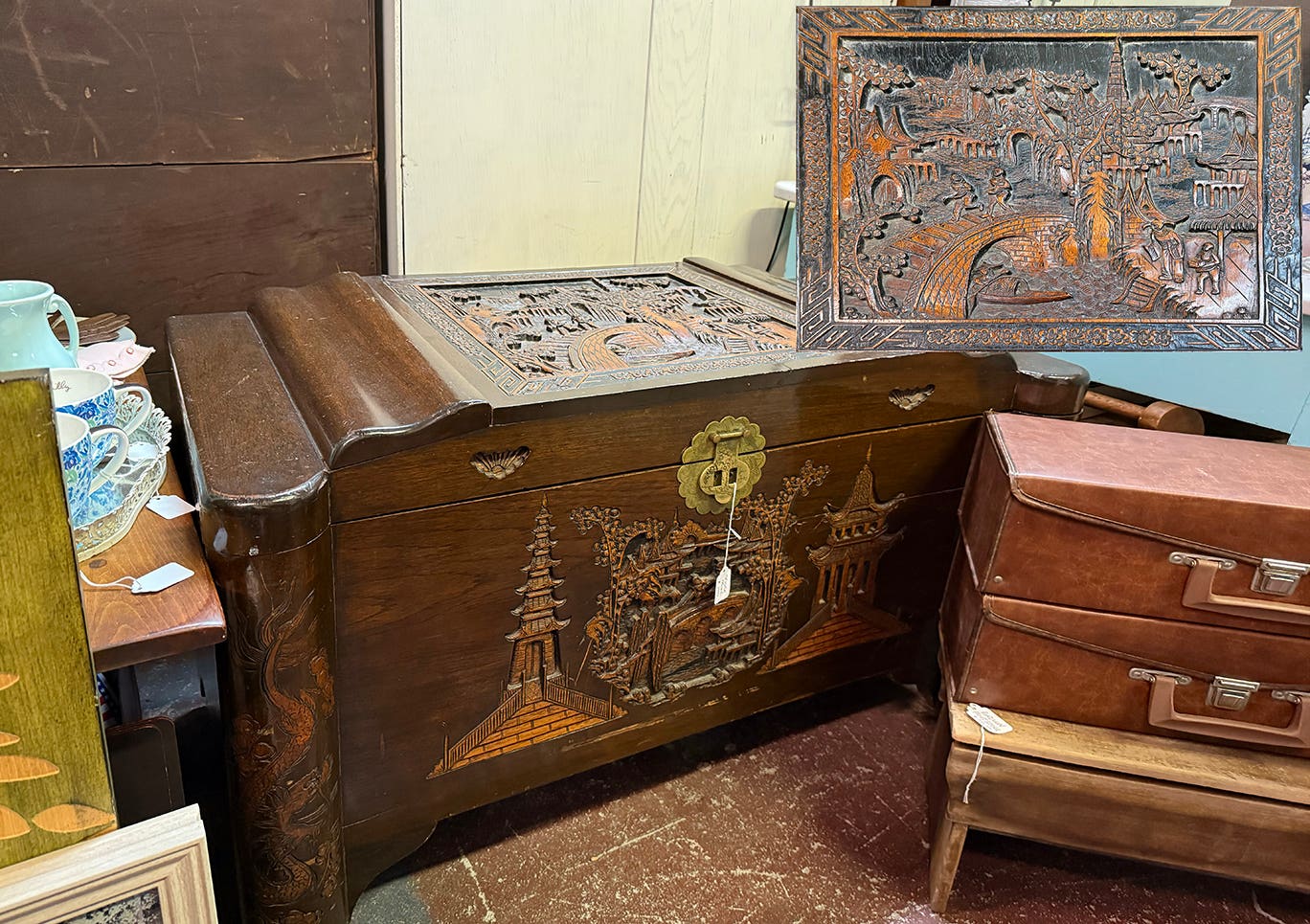Shops and fire are a really bad match
It’s always in the back of our minds. Terrifying for anyone who has been through one, a woodshop fire can burst out of control in the blink of an eye.
It’s always in the back of our minds. Terrifying for anyone who has been through one, a woodshop fire can burst out of control in the blink of an eye. From sawdust to finishes, sheet goods to hardwoods, we live and work with materials that can quickly become fuel for flames. The propane tank on the forklift, chemicals in solvents, and even the dust in the air all contribute to the possibility of a fire.
And it happens way too often. There’s a story almost every week about livelihoods being lost, and occasionally lives, too.
So, what can a woodshop owner do to avoid a fire, or suppress one after it starts?
People first
By far the most important take on this issue is that one can replace anything in the shop, except lives. Nothing inside those walls is worth risking life or limb. So, a good place to start is to create a plan that protects employees, owners, visitors and neighbors.
The Occupational Safety & Health Administration (osha.gov) advises that woodshop owners should “train employees to recognize, avoid, and correct potentially hazardous conditions and behaviors” related to dealing with fires and explosions.
Step one is to institute a regular monthly or quarterly safety meeting for all staff that covers escape routes, a place to meet outside so that everyone can be accounted for, and basic fire safety practices. These can include techniques often taught by local fire departments, including stop-drop-and-roll, how to use a fire extinguisher, what doors to close and when, and whether one should stay low because smoke rises. To make sure employees are getting good information, a shop owner can invite the local fire chief to visit with them, and perhaps do a walk-through of the facility with management to point out any hazards.
The 1-2-3
There are three aspects to dealing with fire: prevention, detection and suppression.
Among the measures that every shop should be taking to prevent fire are a ban on smoking, spark avoidance, flame isolation, and dedicated dust cleanup.
Smoking anywhere in a woodshop is an invitation to disaster. Enough said.
Working with metal in a woodshop is just not smart. Even sanding a putty knife on a belt sander can cause enough of a spark to set off a dust explosion. Welding, brazing, torches and even soldering need to happen somewhere else. Another common source of sparks is frayed or worn electrical cords and loose plugs or outlets. Extension cords are a hazard, and fire departments are constantly warning against them. Properly grounded outlets should be installed where they’re needed, and a local electrician can advise on updating shop outlets to ground or arc fault units, depending on code requirements. Motors in a woodshop should be spark-protected, and need to be spark-free in spray booth fans.
When it comes to detection, every woodshop needs to be adequately outfitted with both smoke and heat detectors. These latter sense a change in temperature, and they can often sound an alarm before smoke is evident. Some heat detectors will shut down a machine before it overheats, or trigger sprinklers. Both kinds of detectors are essential: smoke and visible flames are obviously dangerous, but so are carbon monoxide and other poisonous gases.
Suppression is what we do when the horse has already bolted. It’s all about damage control. If your woodshop doesn’t have a sprinkler system, it’s time to think about installing one. Yes, a limited system that protects employees’ escape routes is probably better than nothing, but be mindful that it can induce a false sense of security. People may assume that the entire building is equipped with sprinklers.
Every workstation must have a fire extinguisher, and every employee should know where it is and how to use it. There should also be extinguishers by each exit, and these should have a Class ABC rating so they can combat fires involving wood and plastics, but also electrical wiring, liquids and gases. The charge in extinguishers needs to be checked annually, and many municipalities have an inspector who stops by and checks that an extinguisher maintenance company has signed off on each unit.
The dangers of dust
Lake Elmo Hardwood was located in a suburb of St. Paul, Minn., and the company ran an excellent hardwoods mill that collected sawdust in a huge hopper adjacent to the building. A decade ago, the bin exploded when concentrated fine dust met an inadvertent spark, and the result was quite dramatic. Debris was spread over a large area, and the company ended up going out of business.
It’s absolutely startling how many fires begin with fine dust.
British Columbia’s Workers’ Compensation Board, called WorkSafeBC, has posted an informative – and frankly quite disturbing – video on combustible wood dust on YouTube (youtu.be/70fZqHsEdMo). It explains why fine dust is “such a hazard in sawmills and wood shops, and also shows how it increases the risk of fires and explosions, which can cause catastrophic injuries, loss of life, and destruction of buildings”. The video goes into detail on how a small amount of airborne dust can cause an explosion that knocks more dust loose, which causes another explosion, and so on. A chain reaction can happen in mere seconds. The message one takes from the video is that routine maintenance is essential, including frequent vacuuming of fine dust from light fixtures, the top of ductwork and any other horizontal surface where it accumulates.
Other sources of dust-related fires are machines where the collection system isn’t 100 percent effective. If, for example, a cabinet saw has dust building inside it and a worker inadvertently causes a spark by perhaps cutting through a steel staple or a nail, or even pushes a board to the point that it overheats, a fire can stay dormant for hours and then trickle into flame in the wee small hours. Or a collection system with ungrounded plastic or vinyl ductwork, which is often seen in smaller shops, can build up static electricity and eventually result in a spark.
Dust isn’t the only volatile fuel. Dave’s Woodworking in Watertown, S.D., burned down 40 years ago because finishes had built up on the walls of the spray booth and an electrical spark ignited the highly volatile coating. The lesson there is that one should check every socket and cord (note: fire marshals everywhere warn against extension cords) for fraying, kinks and loose plugs. Woodshops also need to completely isolate any naked flames from water heaters, furnaces, make-up air heaters and the like. These devices should be housed in a separate room from dust, and not share a return air duct with the main shop.
It’s also a good idea to have a rag policy that designates a place to put used rags, brushes, rollers and anything else that might spontaneously combust.
Insurance
Woodshops that lease equipment should check their insurance policy or call their agent to see how leased equipment is handled in the event of a loss. Businesses also need to do their best to ensure the safety of their neighbors’ employees and property, and sometimes that involves moving combustible materials such as a wood pile, covered pallets, bagged wood chips and dust, old boards and so on from areas outside and around the building.
When it comes to insurance, there is a delicate balance between coverage and the cost of premiums. In case of a fire that causes a total loss, is your business insured for replacement cost, or market value? Are the contents (work in progress, inventory, machines, tools, computers and so on) actually worth more than the building? If there is a devastating fire, are you covered for time lost, interrupted production, relocation costs or even renting temporary premises just to store whatever was salvaged?
Planning
Knowing what to do when disaster strikes can save time, money and lives. And planning beyond the event itself can get a shop back up and running a lot faster. It can also mitigate other, less obvious losses. For example, if a fire consumes the shop, what will you do about the jobs that are already in production, or any future projects on the schedule for which you’ve already accepted partial payments or ordered parts?
Other aspects of planning can be incorporated into daily routines and become habit. One might, for example, develop a routine for backing up computers at the end of each shift on a mobile hard drive that is stored off-site (at home, perhaps, or even in a vehicle). That can save more than bookkeeping records: it can also be a repository for CAD libraries of custom cabinets, moldings, door panels, various patterns and jigs.
Another good habit might be to switch to just-in-time ordering to reduce stocks of materials, or perhaps storing inventory outside the shop in a close-by but separate building. That way, not everything is at risk.
But first on your list must be instructing employees to drop what they’re doing and get out immediately. We don’t ask firemen to build cabinets, so why ask woodworkers to put their lives on the line?
Let the pros fight the fire.
This article originally appeared in the December 2017 issue.







